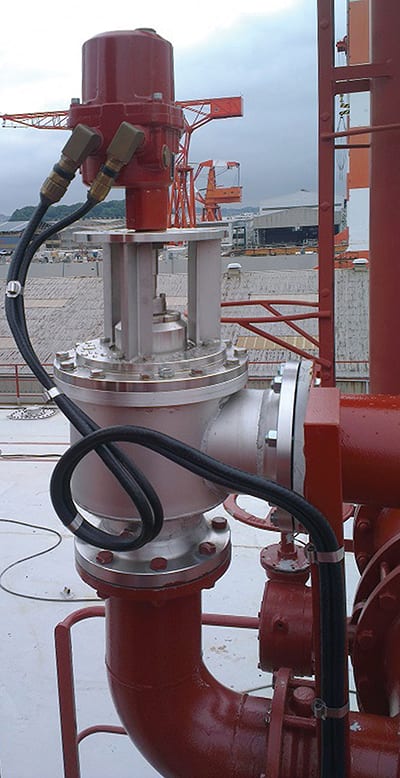This valve actuator helps minimize VOC emissions

Rotork
Minimizing VOC emissions from oil tankers during the fluctuating ambient conditions experienced during sea voyages is important from both environmental and commercial points of view. The controlled release is often undertaken when the gas pressure approaches a pre-set point. However, it is not always clear at what pressure a manually controlled release should be stopped. Without this information, excess vapors can be released, causing air pollution and a loss of cargo. To meet this challenge, the VOCON Valve and Reporting System controls the vapor pressure in oil cargo tanks to minimize and fully control VOC emissions. Designed to comply with the latest international rules and regulations, it is equipped with the most advanced reporting system available. At the center of the system, a venting control valve operated by a CMA electric process valve actuator (photo) from this company is installed on the bypass line between the inert-gas main pipeline and the mast riser. In automatic mode, the actuator modulates the valve position in response to a control signal from a pressure transmitter to control the vapor pressure in all the cargo tanks. This critical duty reduces VOC loss by maintaining a constant pressure in the cargo tanks during the voyage. — Rotork plc., Bath, U.K.